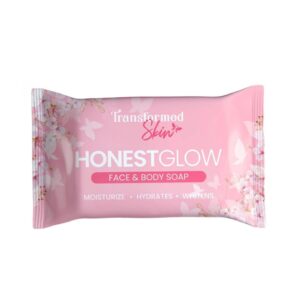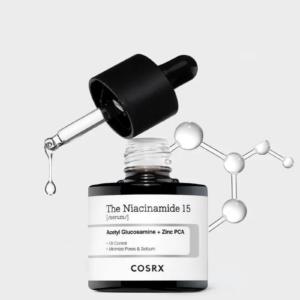Table of Contents
Breaking Down the Science of Acne: Understanding the Causes
Acne is a common skin condition that affects millions of people worldwide. It’s characterized by the appearance of pimples, blackheads, and whiteheads on the skin, which can be painful and unsightly. While it’s often associated with puberty and adolescence, acne can affect people of all ages and backgrounds. Despite its prevalence, many people don’t fully understand the science behind acne and what causes it. In this article, we’ll delve into the causes of acne, exploring the role of hormones, bacteria, and skin cells in this complex condition.
The Role of Hormones
Hormonal fluctuations are a key contributor to acne. During puberty, the body experiences a surge in hormones such as testosterone and estrogen. These hormonal changes stimulate the oil glands in the skin, leading to an increase in sebum production. Sebum is an oily substance that helps to keep the skin moisturized, but when it’s produced in excess, it can clog pores and lead to acne. In women, hormonal changes during menstruation, pregnancy, and menopause can also trigger acne. Additionally, some medications, such as birth control pills and testosterone replacement therapy, can disrupt hormone levels and lead to acne.
The Role of Bacteria
Another key player in the development of acne is the bacterium Propionibacterium acnes (P. acnes). This bacterium is naturally found on the skin and plays a role in the breakdown of sebum, helping to keep the skin clean and healthy. However, when P. acnes multiplies excessively, it can contribute to the development of acne. When sebum is trapped in the pores, P. acnes feeds on it, producing chemicals that cause inflammation and lead to the characteristic redness and swelling of acne.
The Role of Skin Cells
The final piece of the acne puzzle is the skin cells themselves. When skin cells are shed too quickly, they can combine with excess sebum and P. acnes to clog pores. This is particularly true for people with skin types that are more prone to oiliness, such as combination or oily skin. When skin cells are shed too slowly, they can become compacted and clog pores, leading to the formation of blackheads and whiteheads.
The Interplay Between Hormones, Bacteria, and Skin Cells
So, how do these three factors interact to cause acne? It’s a complex process, but it’s essential to understand the interplay between hormones, bacteria, and skin cells to effectively treat acne. Here’s a simplified explanation:
* Hormonal fluctuations stimulate the oil glands in the skin, leading to an increase in sebum production.
* Excess sebum combines with skin cells and P. acnes, clogging pores and creating an ideal environment for P. acnes to multiply.
* P. acnes feeds on the excess sebum, producing chemicals that cause inflammation and lead to the characteristic redness and swelling of acne.
* The combination of excess sebum, P. acnes, and skin cells can lead to the formation of blackheads, whiteheads, and other types of acne.
Treating Acne: Understanding the Science
Now that we’ve explored the causes of acne, it’s essential to understand how to treat it. By targeting the underlying causes of acne, you can reduce the severity and frequency of breakouts. Some common treatments for acne include:
* Topical creams and gels that reduce sebum production and combat P. acnes.
* Oral antibiotics that target P. acnes and reduce inflammation.
* Retinoids, which help to unclog pores and reduce the formation of blackheads and whiteheads.
* Hormonal therapies, such as birth control pills, which can help to regulate hormonal fluctuations and reduce acne.
In conclusion, acne is a complex condition that’s influenced by a combination of hormonal, bacterial, and skin cell factors. By understanding the science behind acne, you can develop a treatment plan that targets the underlying causes of your acne. Whether you’re dealing with mild or severe acne, it’s essential to work with a dermatologist or other healthcare professional to find the best course of treatment for your specific skin type and needs.
Recommended Products
-
 Anua Peach 70 Niacin Serum 30mlKD8.000
Anua Peach 70 Niacin Serum 30mlKD8.000 -
 RDL Kalamansi Whitening Soap – 135gKD1.250
RDL Kalamansi Whitening Soap – 135gKD1.250 -
 Honest Glow Niacinamide Soap by Transformed Skin 100gKD2.500
Honest Glow Niacinamide Soap by Transformed Skin 100gKD2.500 -
 The Ordinary Azelaic Acid Suspension 10%KD6.000 – KD12.000
The Ordinary Azelaic Acid Suspension 10%KD6.000 – KD12.000 -
 ABCAQUIN 4% Hydroquinone Whitening & lightening Cream 30gKD4.000
ABCAQUIN 4% Hydroquinone Whitening & lightening Cream 30gKD4.000 -
 Honest Glow Glass Skin Soap – 80gKD2.500
Honest Glow Glass Skin Soap – 80gKD2.500 -
Product on sale
 Some By Mi AHA BHA PHA 30 Days Miracle Cream – 60gOriginal price was: KD10.000.KD8.000Current price is: KD8.000.
Some By Mi AHA BHA PHA 30 Days Miracle Cream – 60gOriginal price was: KD10.000.KD8.000Current price is: KD8.000. -
 The Ordinary Glycolic Acid 7% Exfoliating TonerKD6.000 – KD9.000
The Ordinary Glycolic Acid 7% Exfoliating TonerKD6.000 – KD9.000 -
Product on sale
 COSRX The Niacinamide 15 Serum – 20mlOriginal price was: KD11.990.KD10.000Current price is: KD10.000.
COSRX The Niacinamide 15 Serum – 20mlOriginal price was: KD11.990.KD10.000Current price is: KD10.000.



